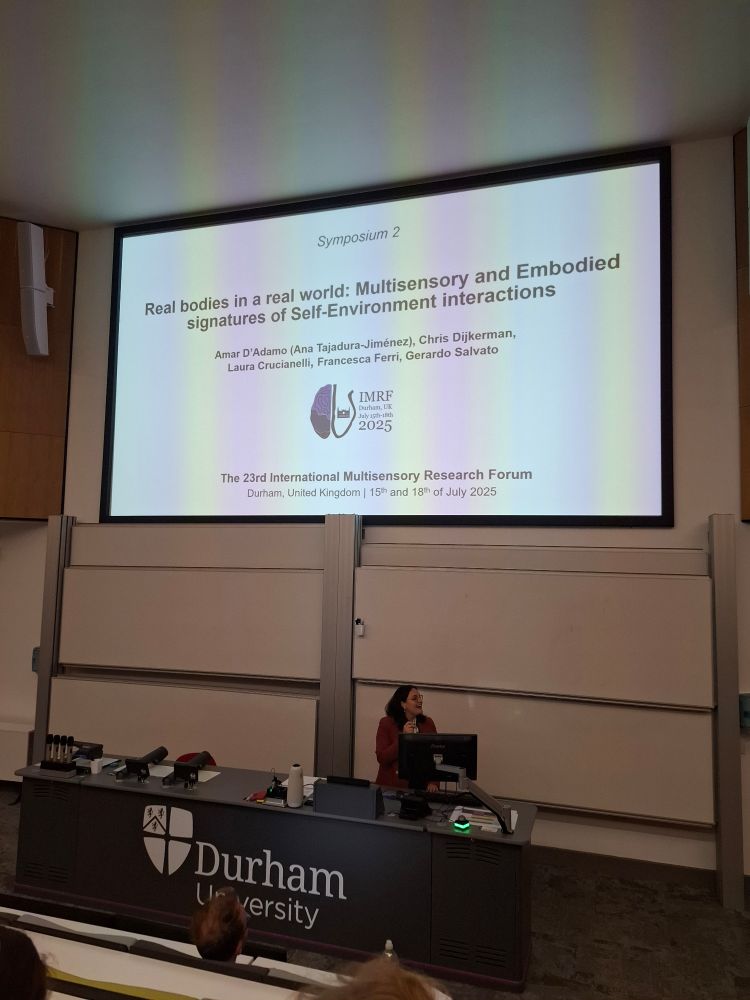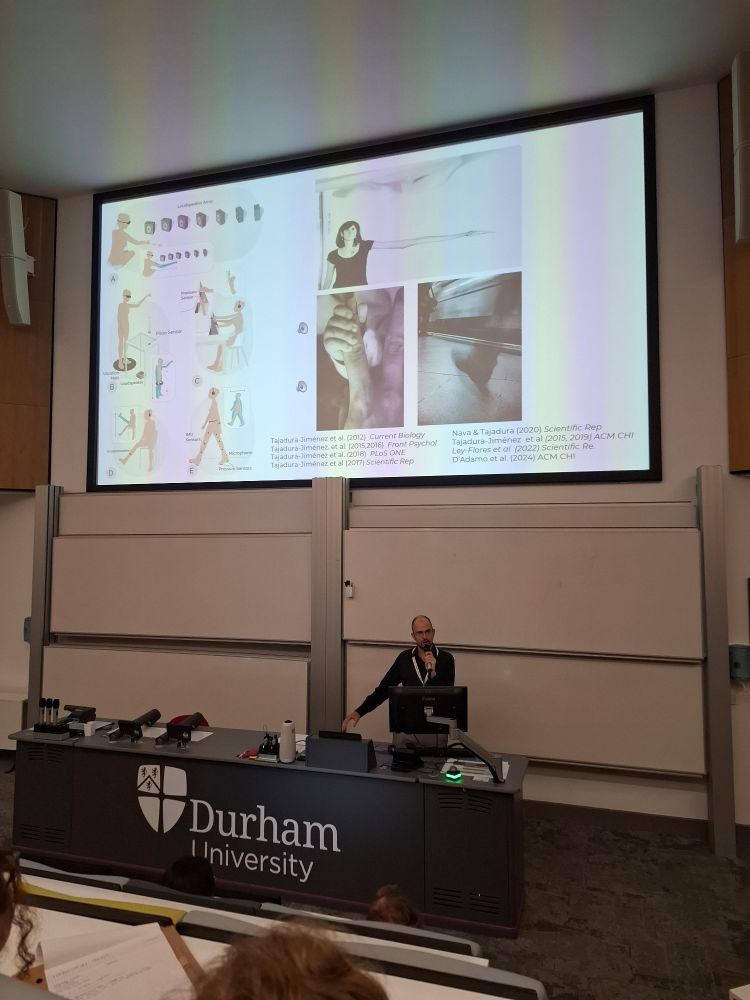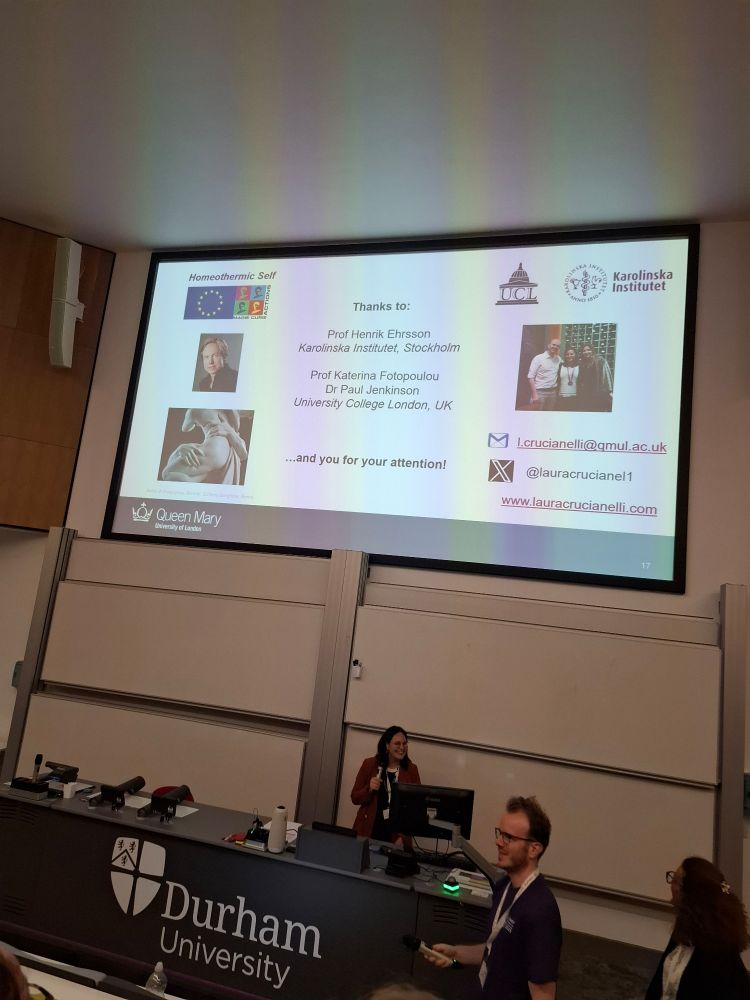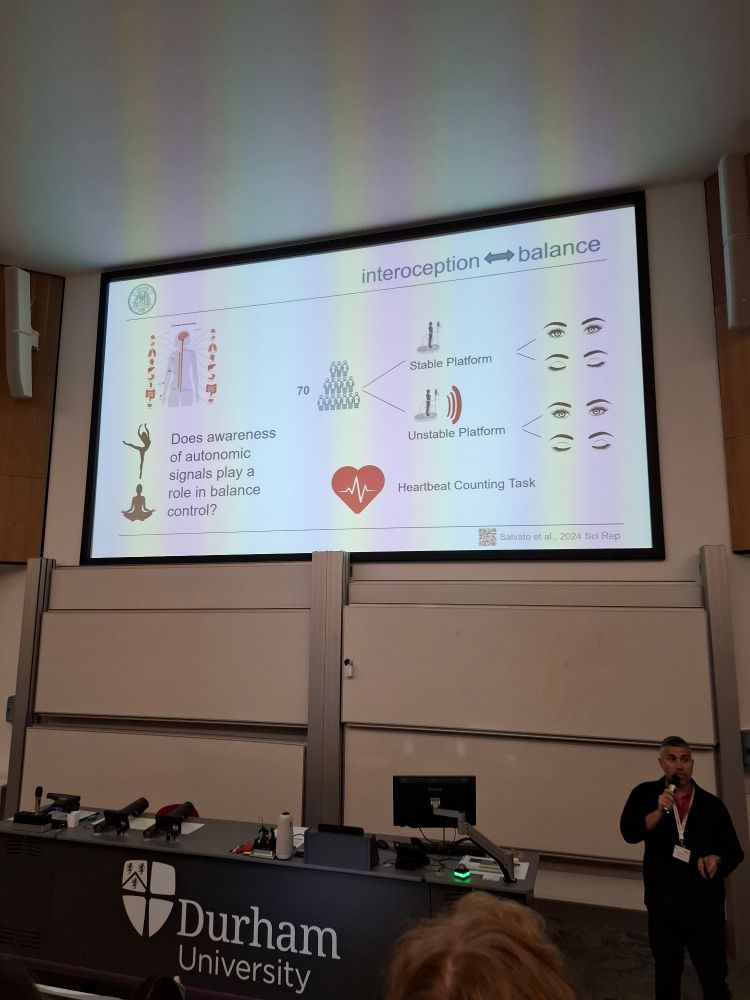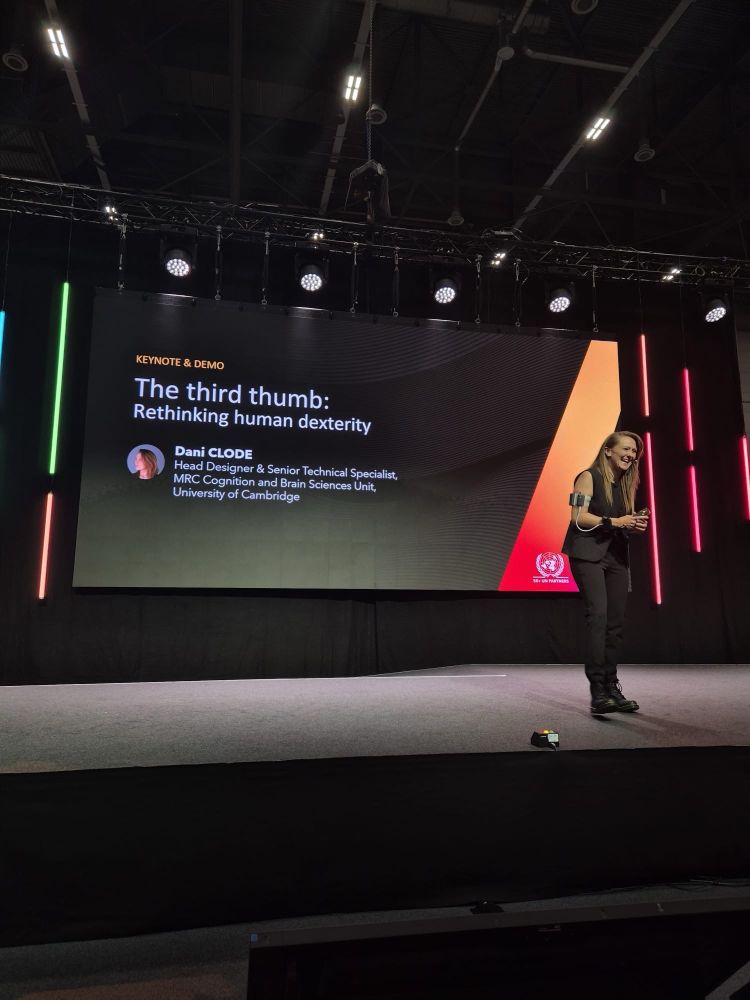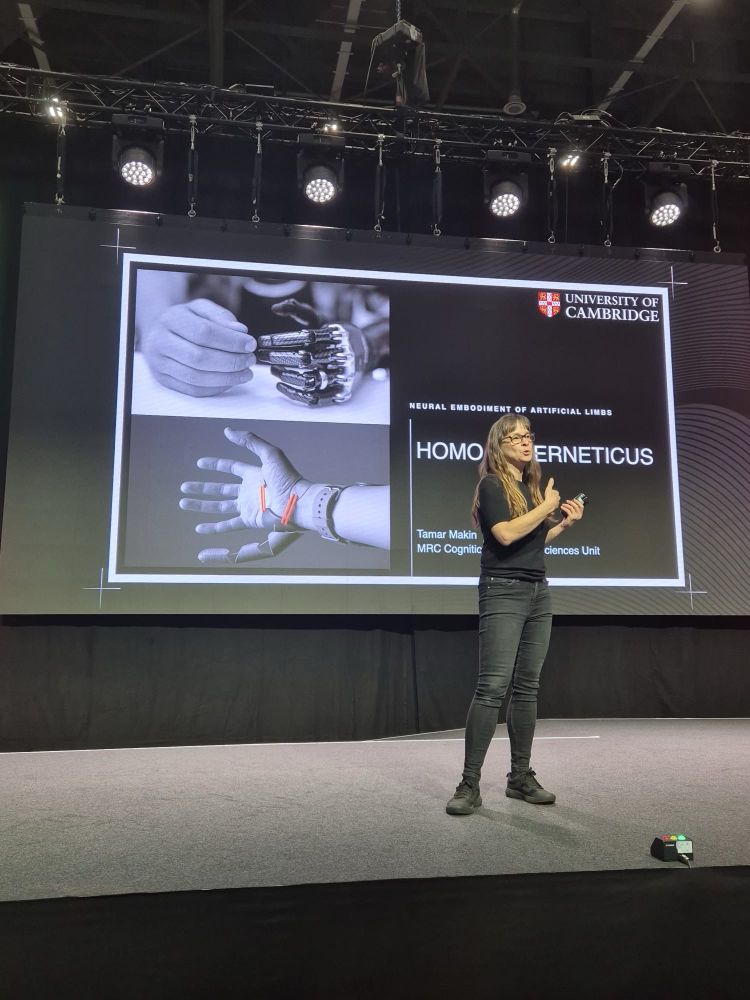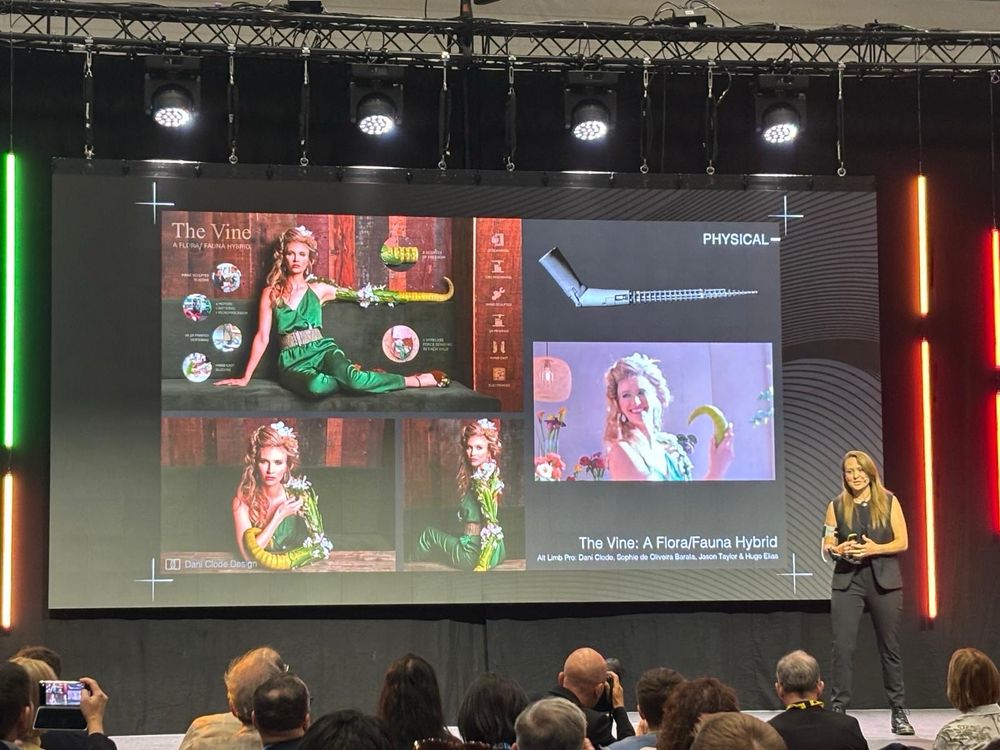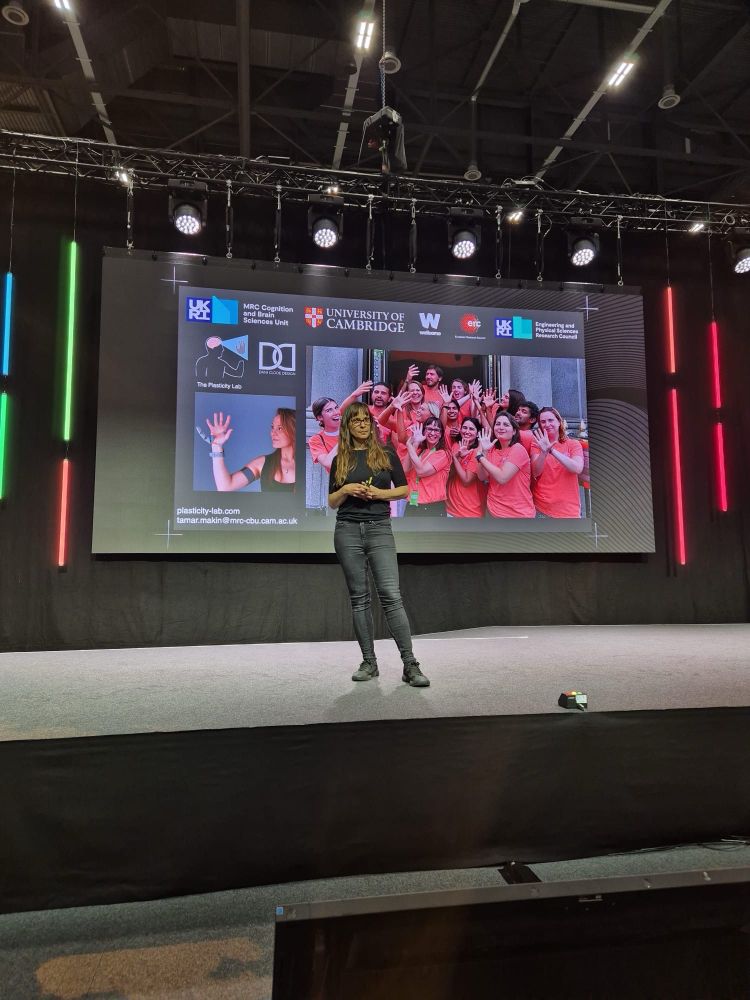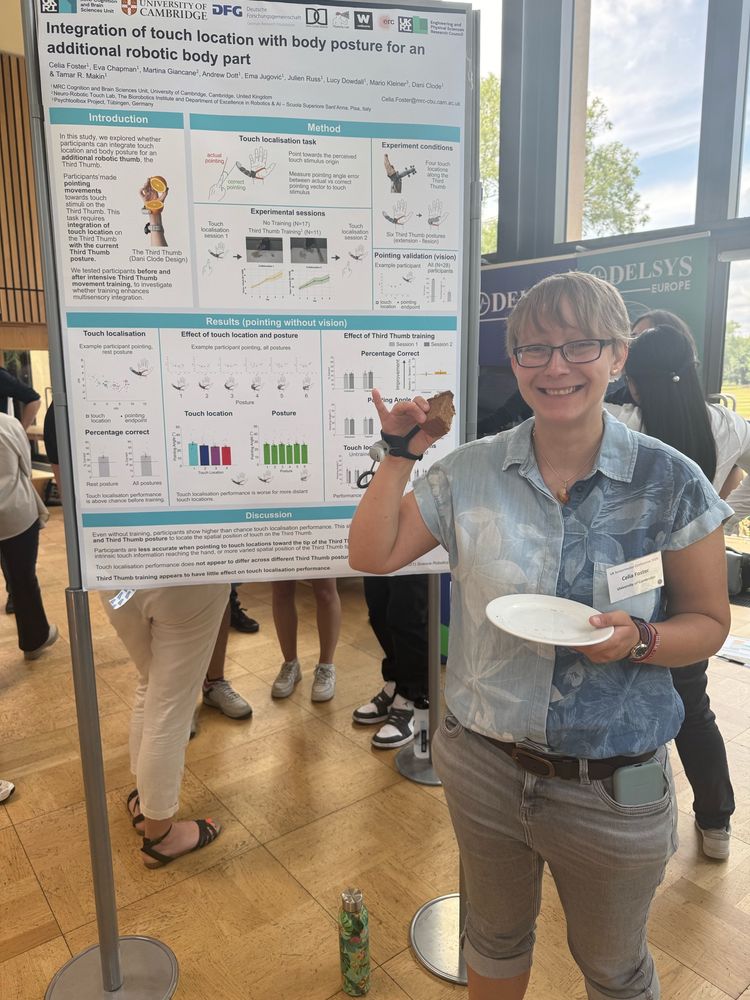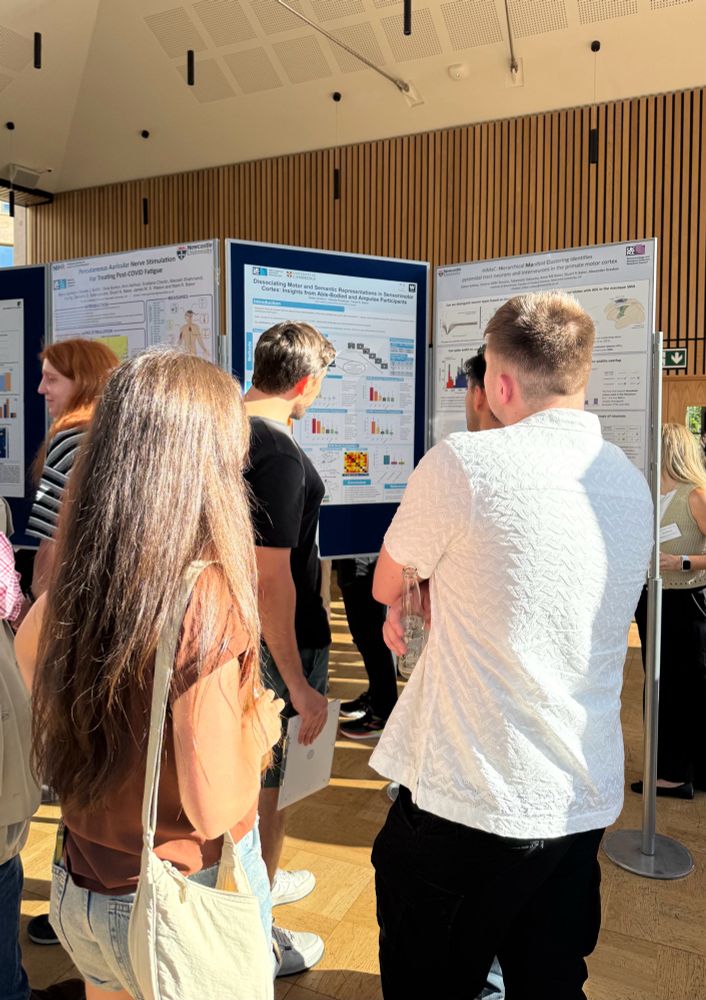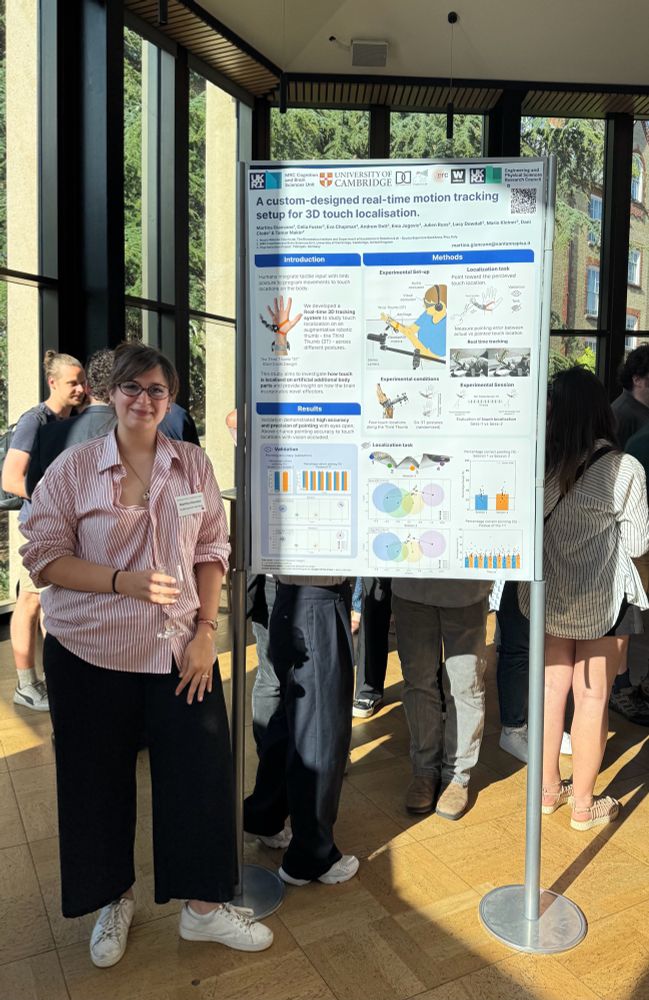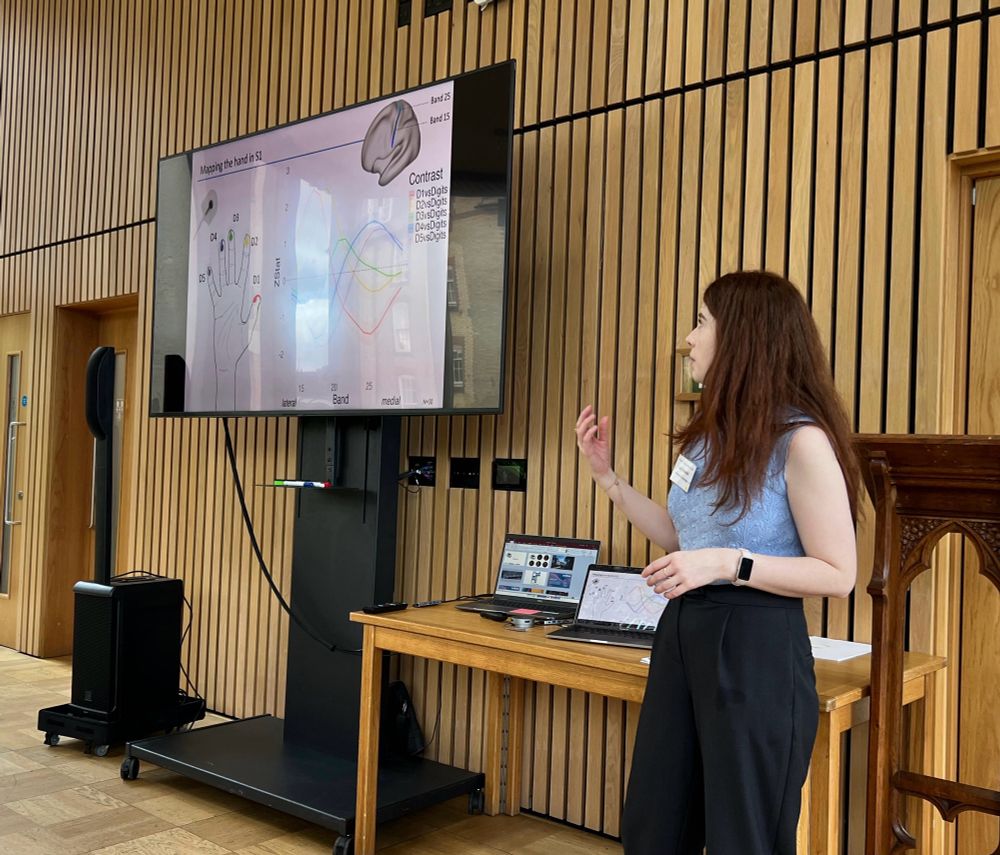Markerless tracking shouldn’t feel like a coding project!
We released TrackStudio (arxiv.org/abs/2511.07624), a fully graphical, open-source toolkit for markerless human motion tracking. It enables use of current 2D/3D tools and video synchronisation without coding.
17.11.2025 13:29 — 👍 6 🔁 3 💬 0 📌 0

Donate to From Trauma to Triumph: My 18-Year Life Day Journey, organized by Kirsty Mason
❤️ When Everything Changed
As I type this, on the 7th November 2… Kirsty Mason needs your support for From Trauma to Triumph: My 18-Year Life Day Journey
Our lab has been lucky to know and work with Kirsty Mason for many years - she’s an incredible woman whose strength and openness have taught us so much about recovery and resilience 💛 If you can, please check out her GoFundMe and show some support! gofund.me/0283e864d
11.11.2025 14:11 — 👍 5 🔁 2 💬 1 📌 3
Super pleased to see this heroic effort finally in print!! Many thanks to Hunter, our amazing study participants, and everyone else who made this fantastic study come true.
21.08.2025 10:07 — 👍 24 🔁 5 💬 0 📌 0
Homepage of the Action, Computation, & Thinking (ACT) Lab, Yale department of psychology
Happy to announce that my lab @ Yale Psychology (actcompthink.org) will be accepting PhD applications this year (for start in Fall '26)!
Come for the fun experiments on human learning, memory, & skilled behavior, stay for the best 🍕 in the US.
Please reach out if you have any questions!
24.07.2025 13:29 — 👍 111 🔁 51 💬 4 📌 0
In summary:
– Force control offers better early motor performance
– EMG fosters learning generalization
– Raw EMG contains hidden potential
Read the full preprint at doi.org/10.1101/2025.06.16.658246. Thanks to all co-authors and participants!
12/12
17.07.2025 10:57 — 👍 1 🔁 1 💬 0 📌 0
So, what does this tell us?
EMG control may be harder initially, but it offers a richer signal and better transfer of learning. With optimised hardware and software, it could be a powerful interface for future augmentation device control.
11/12
17.07.2025 10:57 — 👍 1 🔁 0 💬 1 📌 0

And how do users perceive the Thumb? Participants reported a strong sense of agency (control over the Thumb) but no body ownership (it didn’t feel like part of the body). All categories of embodiment were rated similarly for both EMG and FS.
10/12
17.07.2025 10:57 — 👍 0 🔁 0 💬 1 📌 0
Using predictive modelling, we found the force control signal could predict performance, whilst the processed EMG control signal could not predict EMG performance.
But importantly, the raw EMG signal could act as a predictor. This suggests pre-processing might discard important information.
9/12
17.07.2025 10:57 — 👍 0 🔁 0 💬 1 📌 0

To provide a mechanistic insight into this generalisation, we cross-correlated the toe-movement signal and muscle signal, and observed a high correlation during EMG control, suggesting participants are expressing force-related toe movements while using the EMG control, contributing to learning!
8/12
17.07.2025 10:57 — 👍 0 🔁 0 💬 1 📌 0
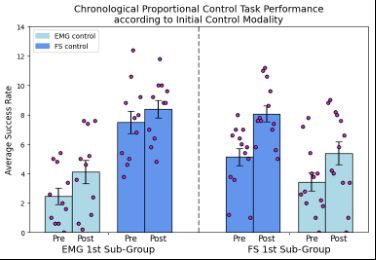
But we also saw that the control method participants started with impacted learning transfer to their second control method.
Beginning with EMG control led to superior transfer when switching to force control – suggesting muscle control is a better tutor for generalisable learning.
7/12
17.07.2025 10:57 — 👍 0 🔁 0 💬 1 📌 0

On the proportional control task completed before and after training, force control continued to demonstrate a clear advantage. However, participants showed similar learning gains across both control modalities.
6/12
17.07.2025 10:57 — 👍 0 🔁 0 💬 1 📌 0

Surprisingly, an additional cognitive load during the collaboration motor task did not affect performance for either control modality. Participants also performed similarly in the cognitive load arithmetic task, regardless of control.
5/12
17.07.2025 10:57 — 👍 0 🔁 0 💬 1 📌 0
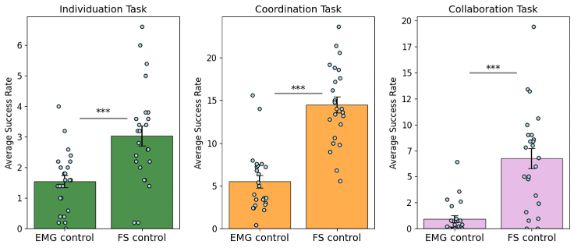
Across all training tasks, both control methods enabled use of the Third Thumb, but force control consistently yielded better task performance.
4/12
17.07.2025 10:57 — 👍 0 🔁 0 💬 1 📌 0

EMG-based control is closer to the neural source; muscle activity precedes motion. Our initial hypothesis: EMG should enable more intuitive and efficient learning.
We compared both control modalities across multiple motor tasks using a counterbalanced within-participants design.
3/12
17.07.2025 10:57 — 👍 0 🔁 0 💬 1 📌 0

The Third Thumb is designed to extend and enhance the motor abilities of an already fully functional hand. It was initially designed to be proportionally controlled by movement of the wearer’s toes via force sensors.
But what if we tapped into muscle signals directly instead?
2/12
17.07.2025 10:57 — 👍 0 🔁 0 💬 1 📌 0
Can you control an extra robotic finger just by flexing your leg muscles?
In our new study, we put EMG-based muscle control to the test, comparing it to traditional toe force sensor control for operating the Third Thumb (designed by @daniclode.bsky.social).
1/12
17.07.2025 10:57 — 👍 8 🔁 3 💬 1 📌 0
Thrilled to share our most recent work led by our brilliant PhD student @mariamolinasan.bsky.social, exploring generalisation of motor learning with a robotic limb, featuring The Third Thumb 🦾
07.07.2025 16:03 — 👍 0 🔁 1 💬 0 📌 0
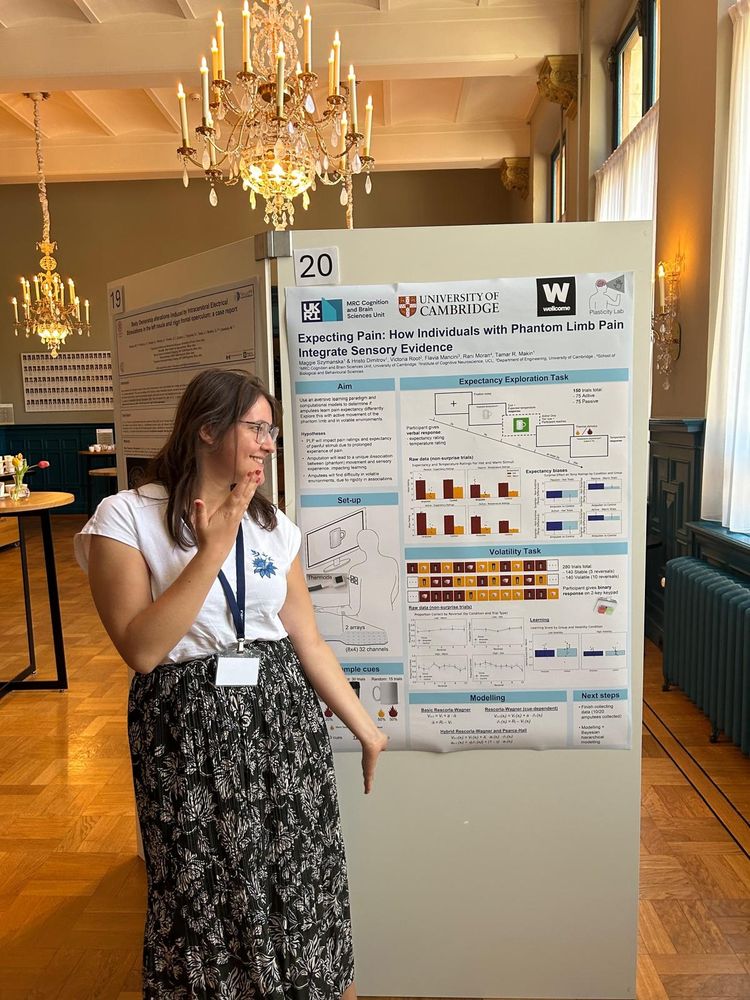
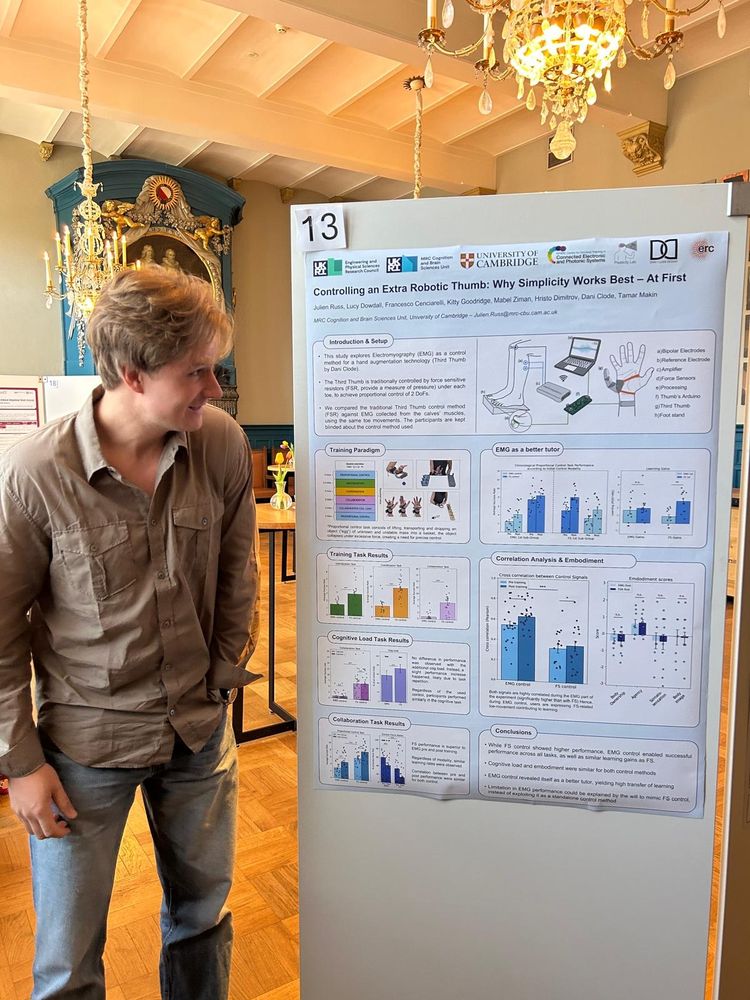
Our PhD students @maggieszymanska.bsky.social and Julien Russ ready to present their posters today at #BRNet2025! Find them in the poster room at 2pm, talking about phantom limb pain and using EMG to control the Third Thumb 🧠
04.07.2025 10:55 — 👍 13 🔁 4 💬 0 📌 1
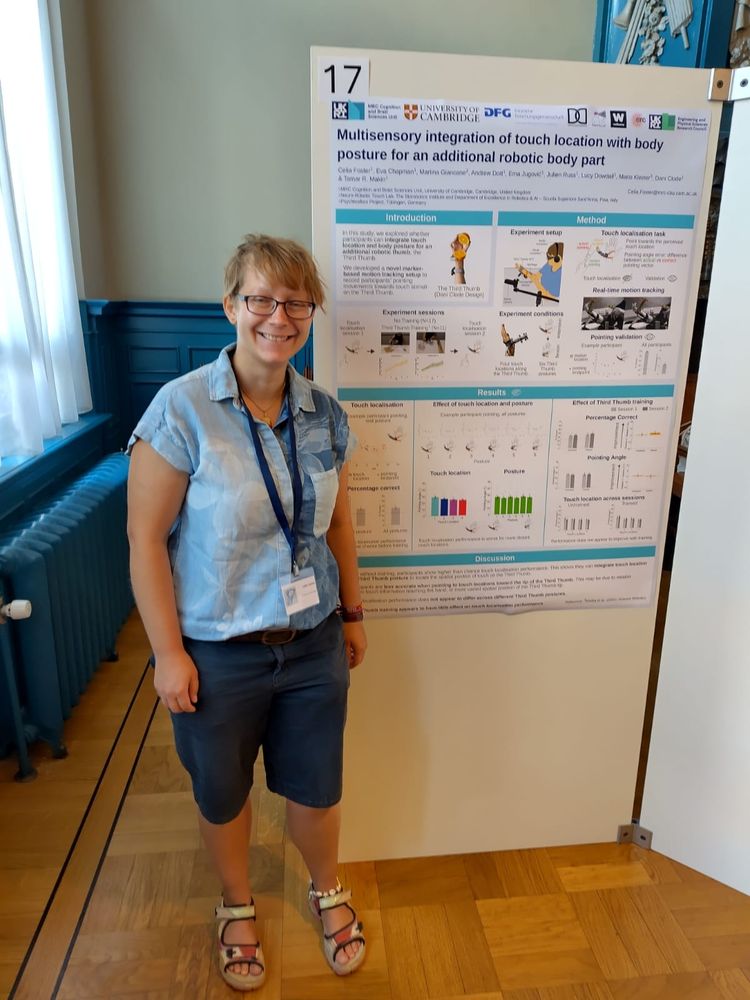
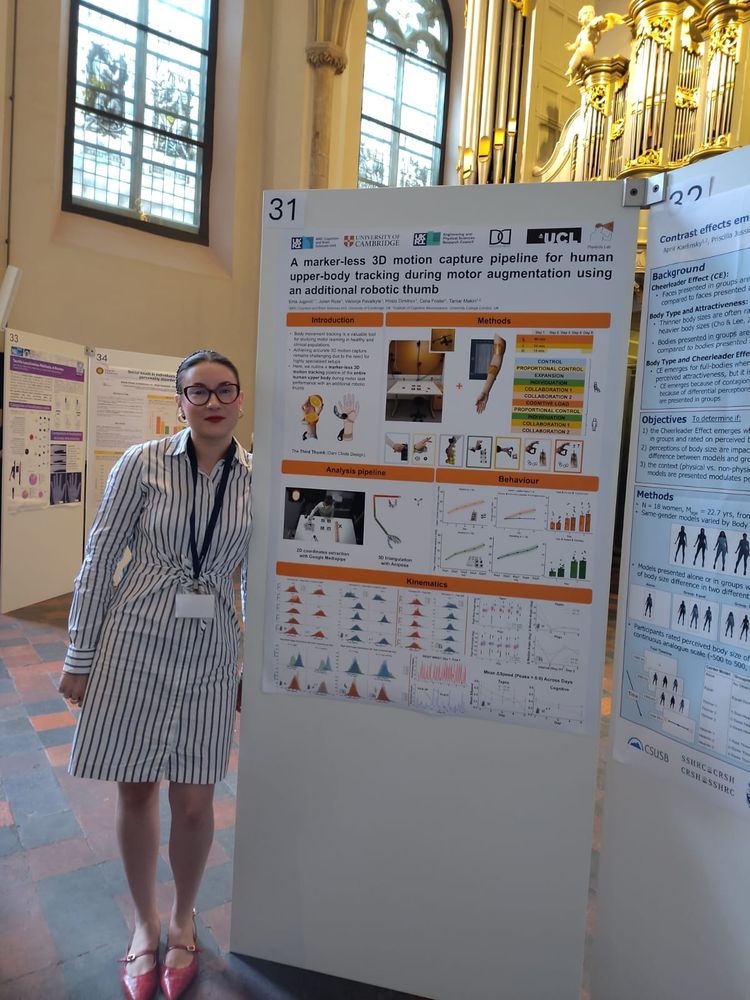
Having a great time in Utrecht at #BRNet2025! Today, our very talented postdoc @celiafoster.bsky.social and amazing PhD student Ema Jugovic presented their posters. Really great work showcasing our new Third Thumb studies 🧠
03.07.2025 12:20 — 👍 13 🔁 4 💬 0 📌 0

Great talk by Matej Hoffman starting off Day 2 of #BRNet2025. Really exciting to see our BOLDkids research on congenital limb difference mentioned as well! Also - what an amazing venue 😊
03.07.2025 12:15 — 👍 8 🔁 2 💬 0 📌 0
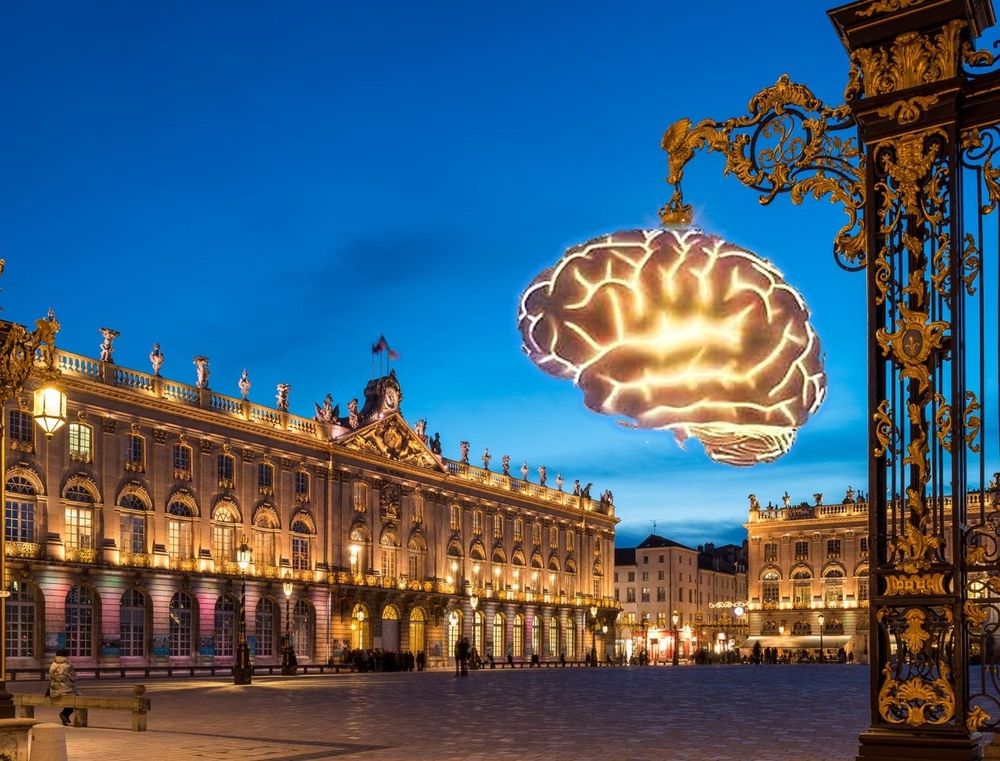
Nancy, France
🧠New postdoc position - come work with us in France! 🥐👩🔬
Two-Year Postdoc Position on the Role of Temporal Integration in Visual Attention Using Human Intracerebral Recordings | EURAXESS euraxess.ec.europa.eu/jobs/351721
📆Starting Date: October 2025
⏱️Application deadline: 31 Aug 2025
11.06.2025 14:53 — 👍 8 🔁 4 💬 1 📌 2
Check-out our latest research! 🧠 @lucydowdall.bsky.social's PhD work looking at the sensory representation of an artificial limb is now up on bioRxiv! doi.org/10.1101/2025.06.16.658246 🦾 see her thread below highlighting some of our key findings
19.06.2025 13:08 — 👍 8 🔁 4 💬 0 📌 0
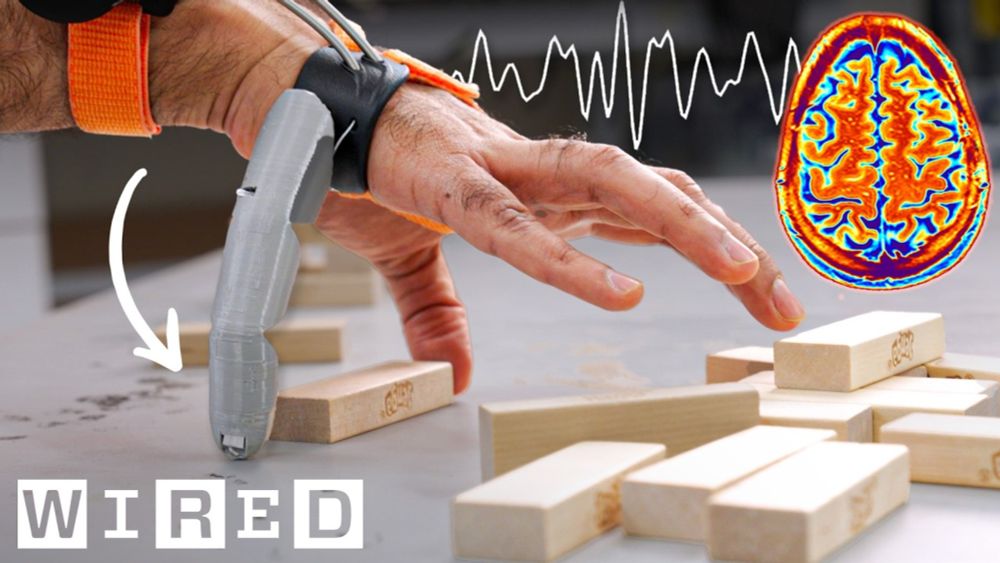
6 Arms, 3 Thumbs: I Tested The Future of Robotic Limbs | Superhuman | WIRED
Enjoy the videos and music you love, upload original content, and share it all with friends, family, and the world on YouTube.
Great video by @wired.com showcasing the Third Thumb! 👍👍👍We're super grateful to be able to work with the amazing Dani Clode and investigate how our brains 🧠 accomodate motor control of an extra robotic finger! The segment on the Third Thumb starts at 6:02 - you can watch here: rb.gy/t8gdhs
12.05.2025 15:19 — 👍 5 🔁 2 💬 0 📌 0
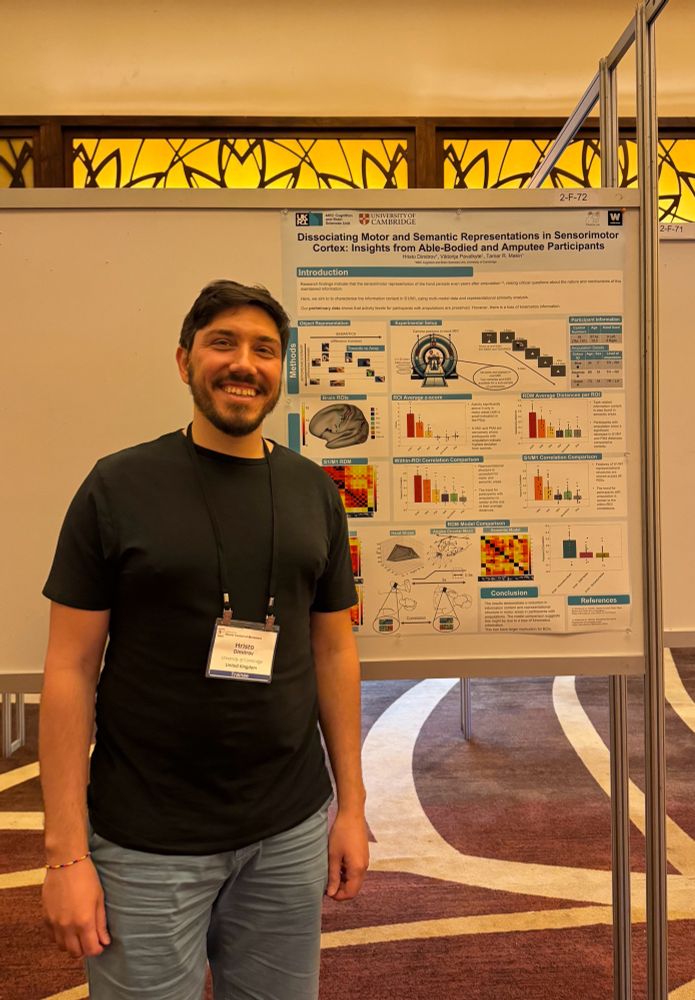
Hristo’s presenting his poster today and tomorrow at #NCMPan25! Come and check out his work on information content in sensorimotor cortex in controls and people with amputations at 2-F-72 @ncmsociety.bsky.social
01.05.2025 17:20 — 👍 6 🔁 3 💬 0 📌 0

Come check out Celia’s poster today and tomorrow at #NCMPan25 and learn about touch localisation abilities with the Third Thumb! 1-F-73 @ncmsociety.bsky.social @celiafoster.bsky.social
29.04.2025 16:24 — 👍 5 🔁 1 💬 0 📌 2
Reporter at The Transmitter | PhD, Neuroscience from UPenn 🧠 | Prev: Science, The Open Notebook & ‘21 AAAS Mass Media Fellow at STAT News | Boricua 🇵🇷
Neural engineer and neuroethicist
Neuromotor research program manager at Meta Reality Labs.
Psychtoolbox-3 is an open-source toolbox for creating vision and neuroscience experiments. Visit http://psychtoolbox.net for more information.
Cognitive Neuroscience PhD student, studying motor and perceptual learning in body augmentation | Plasticity lab, University of Cambridge | MD, neurology, epilepsy | she/her
Incoming Humboldt Fellow at the University of Kiel, Germany | Developmental neuroscience, interoception, and brain–body interaction | Previously Karolinska Institutet and University of Sussex
Physical therapist. Postdoctoral research fellow at the Jefferson Moss Rehabilitation Research Institute
Neuroscientist • brain • spinal cord • pain and temperature perception
Lab website: https://body-pain-perception-lab.github.io/
Mobilizing the fight for science and democracy, because Science is for everyone 🧪🌎
The hub for science activism!
Learn more ⬇️
http://linktr.ee/standupforscience
How do you feel? Exploring how afferents produce sensations in humans, using #microneurography. Group leader Dr Rochelle Ackerley CRPN, CNRS-Aix-Marseille Univ
Professor, UW Biology / Santa Fe Institute
I study how information flows in biology, science, and society.
Book: *Calling Bullshit*, http://tinyurl.com/fdcuvd7b
LLM course: https://thebullshitmachines.com
Corvids: https://tinyurl.com/mr2n5ymk
he/him
Prof of Neuroscience and Mental Health UCL_ICN
| Israel&UK politics | Travel adventures | Good food | Trees,wood & fires | Black cat
Professor of Neuroscience and Computational Psychiatry at the University of Cambridge | Deputy Head of the School of Biological Sciences | Senior Affiliated Scientist at MRC CBU | Fellow at Clare College | 🏳️🌈| www.lawsonlab.co.uk |
Sharing guidance, resources, code & data for transcranial magnetic stimulation (TMS) research.
Charged up by @thehandlab.bsky.social
Join us on GitHub:
https://github.com/TMSMultiLab/TMSMultiLab/wiki
Assoc. Prof. at Emory University. I study touch, body representations and multisensory perception. ❤️ cognitive neuropsychology.
she/her pronounced Ya'elle, not like the university. Comp cog neuro, feminist, activist, mom. Stop the war NOW. End the occupation. Equality will bring security.













